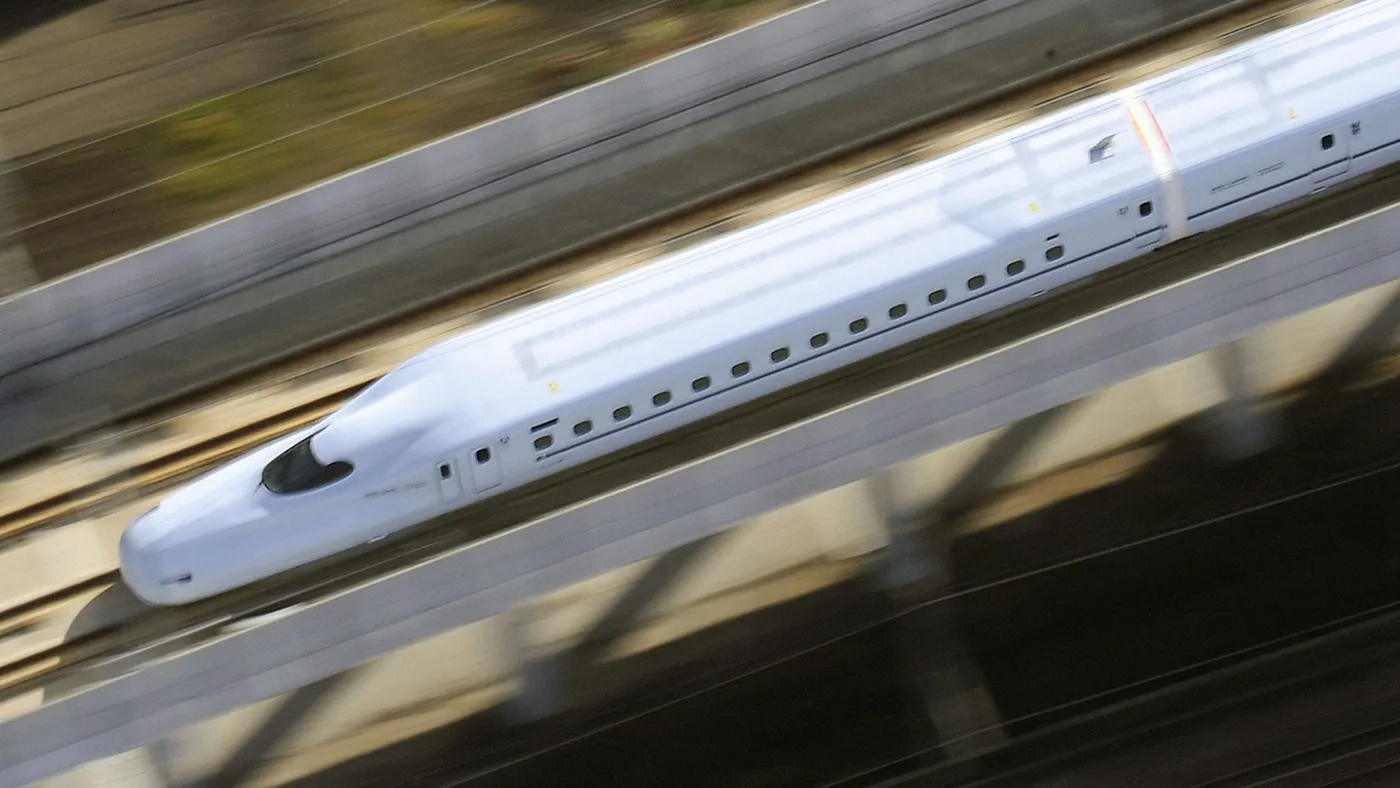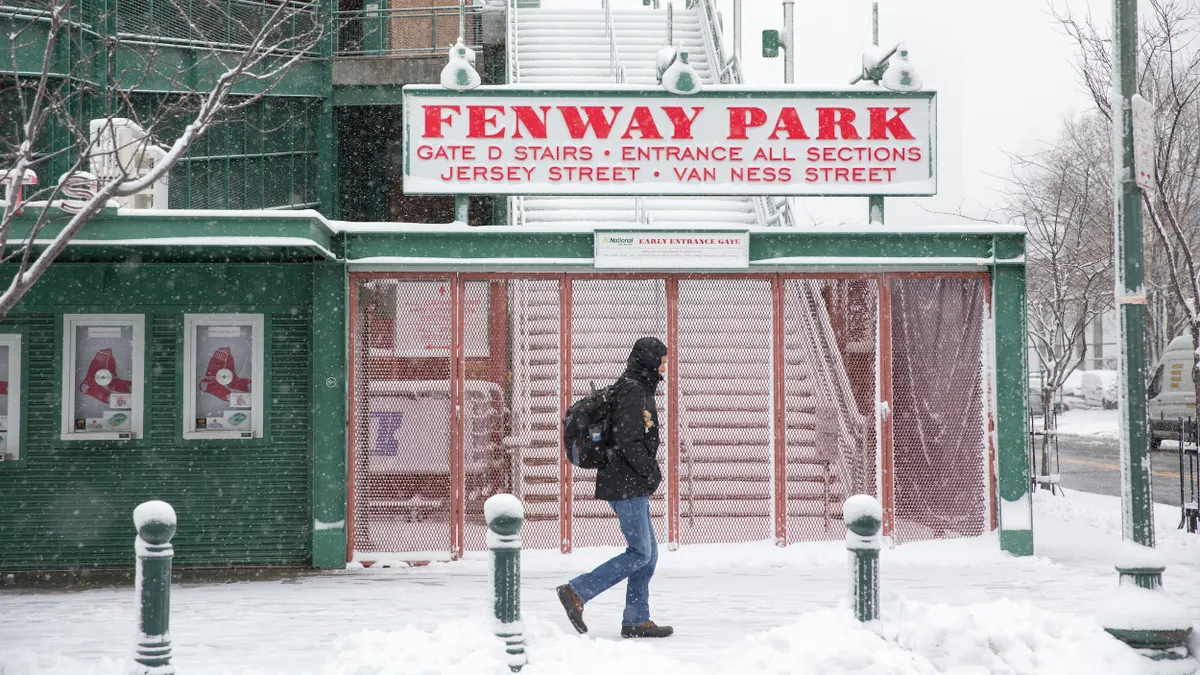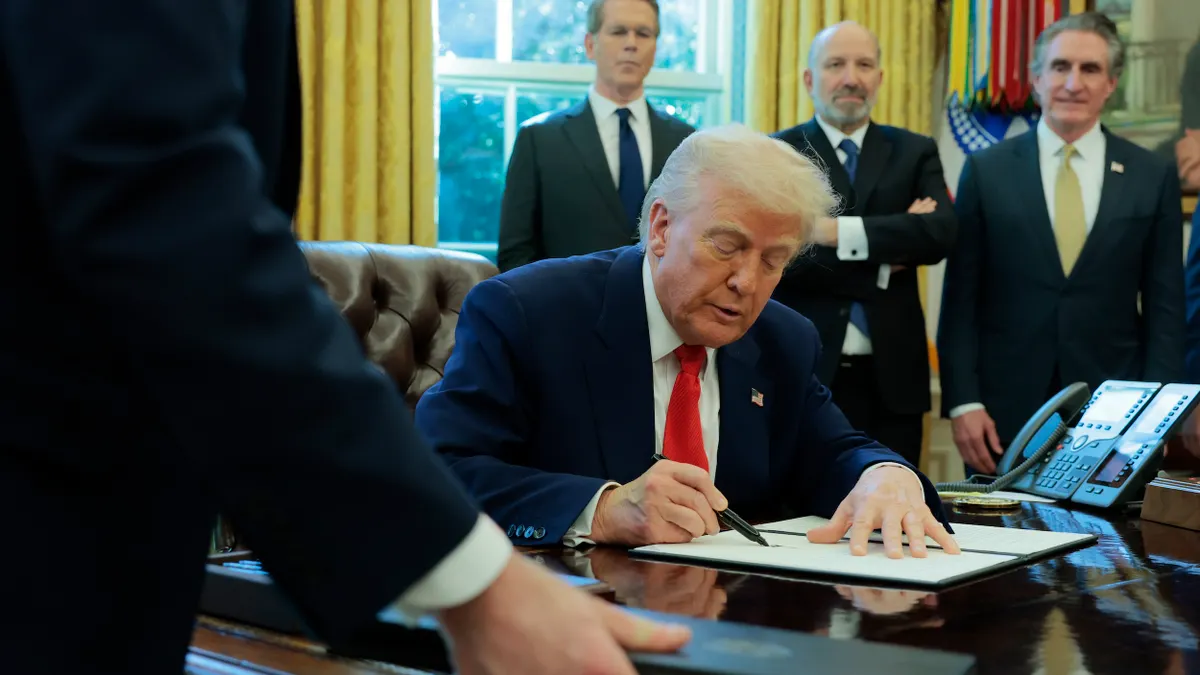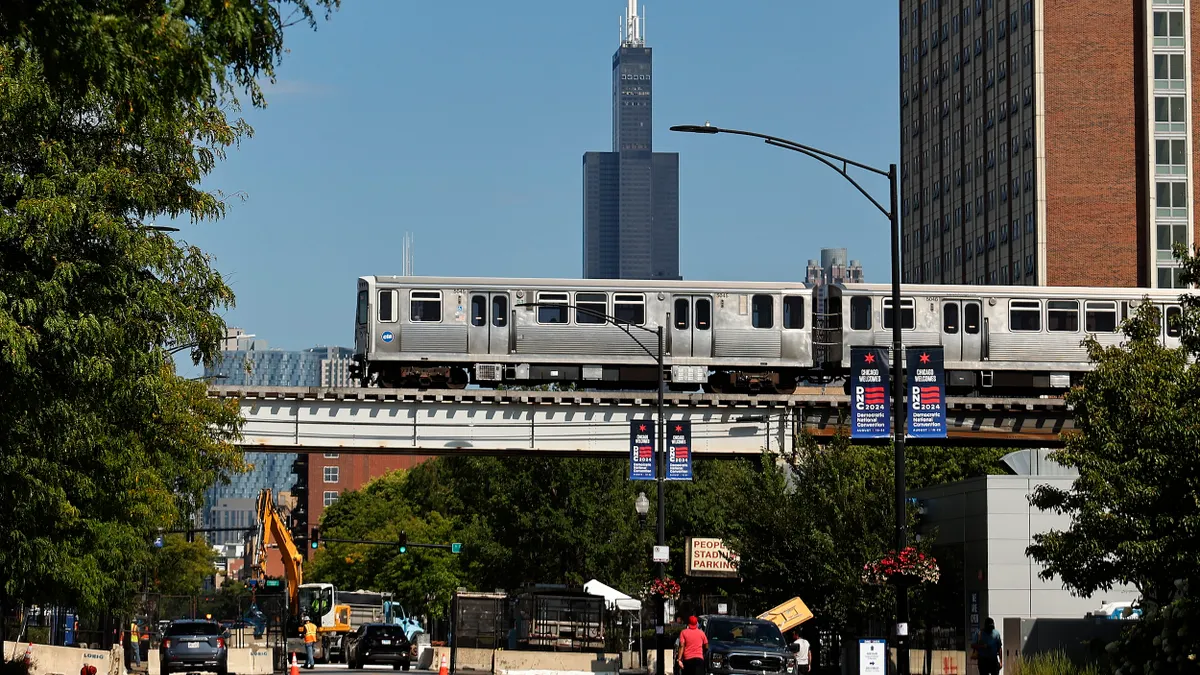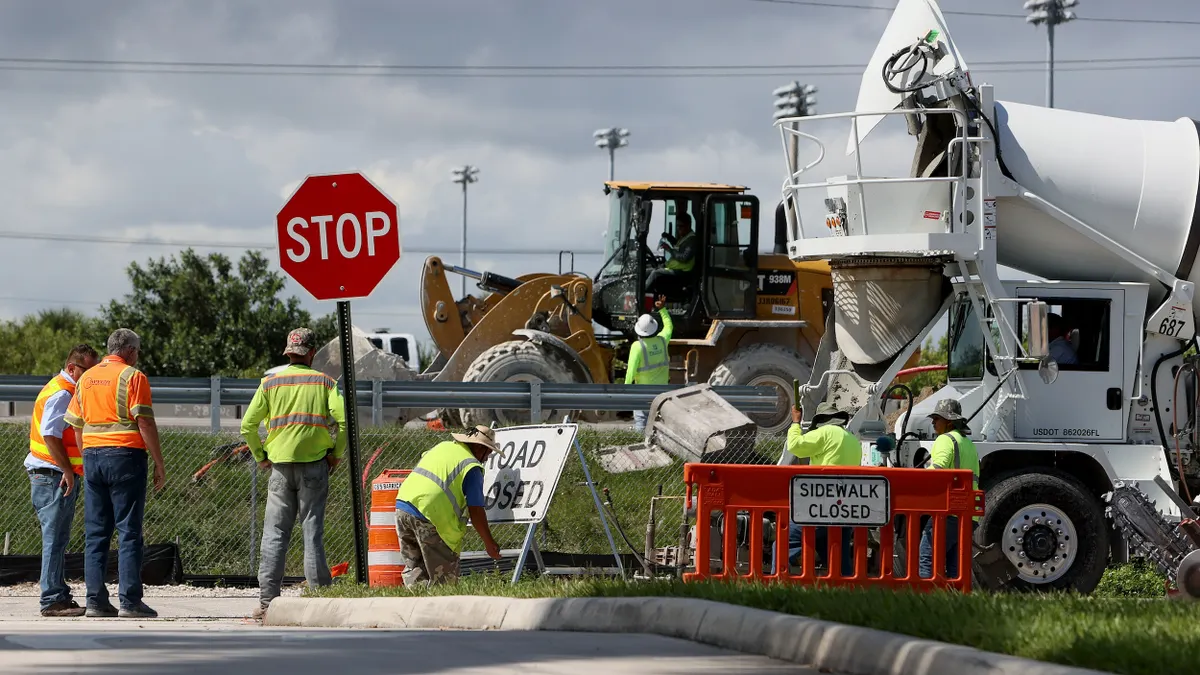Editor's note: This is Part 1 in Smart Cities Dive's series on the future of U.S. high-speed rail. Part 2 delves into each of the high-speed rail projects under construction or being planned in the U.S. Part 3 examines the challenges to creating a national high-speed rail network.
In just four years, trains traveling nearly 200 mph could whoosh passengers between the entertainment capital of Las Vegas and the 2028 Summer Olympics in Los Angeles. “When that starts to happen, people all across the country will say, ‘Why can't we have this closer to where I live?’” said U.S. Transportation Secretary Pete Buttigieg in an interview.
High-speed rail projects are under construction in California and Nevada and in the planning stages in the Pacific Northwest, the Southeast and Texas. Government officials, industry leaders, labor representatives and rail advocates this summer and fall described the growing momentum in the U.S. for true high-speed trains like those in Europe, Japan and China.
But the history of U.S. high-speed rail is one of starts and stops instead of smooth, fast journeys. When Japan launched the world’s first bullet train in 1964, some in President Lyndon Johnson’s administration called for the launch of similar service between Boston and Washington, D.C. Sixty years later, that corridor is still waiting.
The 1965 High-Speed Ground Transportation Act authorized high-speed rail research and development, primarily focused on the Northeast Corridor. The outcome was the development of electrically powered, self-propelled Metroliners for the Washington-New York City portion of the corridor, which is electrified, and trains with gas-turbine engines, dubbed TurboTrains, for the New York City-Boston portion, which was not completely electrified at that time. Both went into service in 1969.
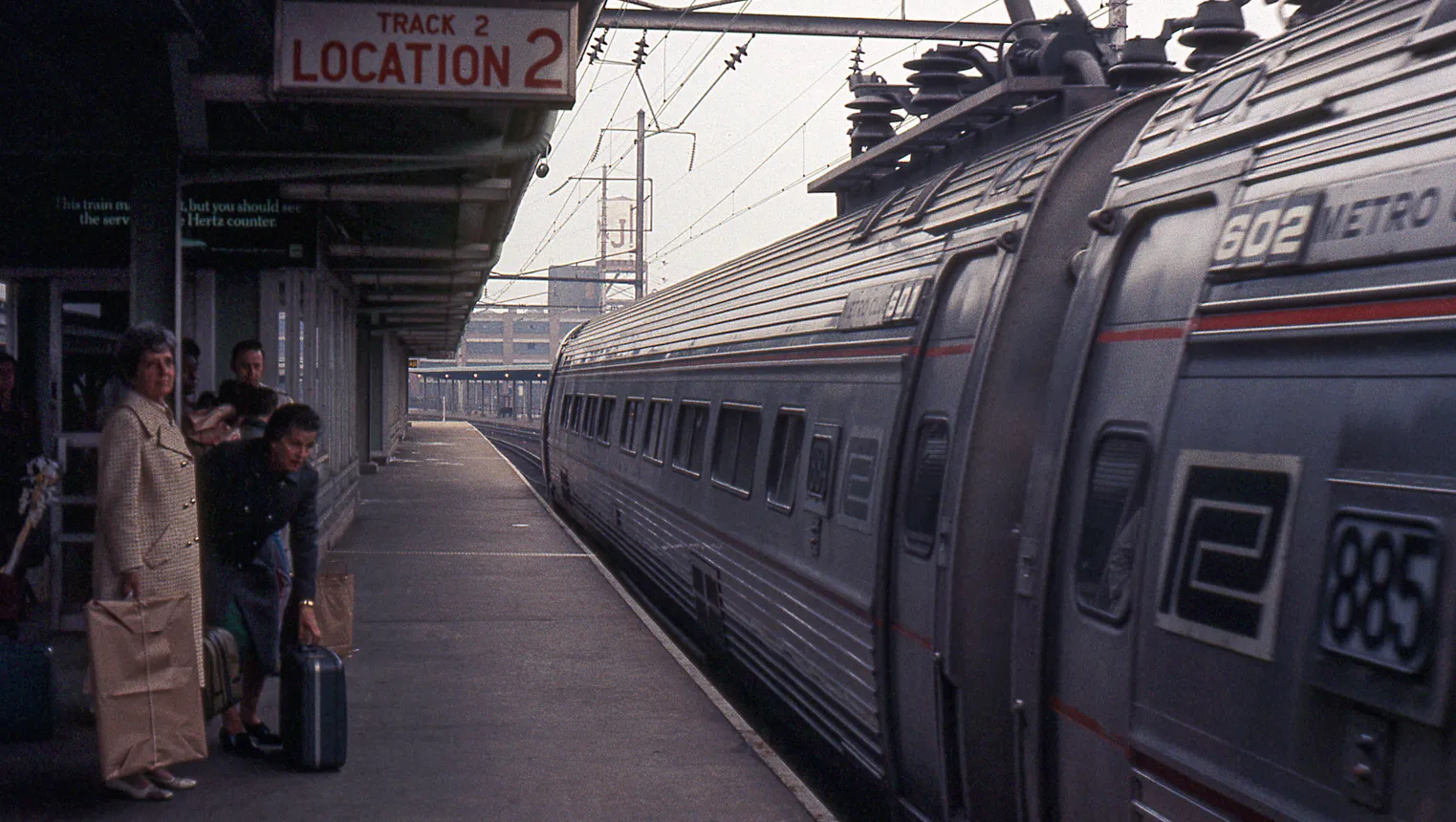
Despite being capable of running up to 160 mph, the Metroliners were limited to 120 mph by track conditions and electrical issues. Even so, the trains cut travel time between D.C. and New York City by almost an hour. Both the TurboTrains and Metroliners were unreliable, but by 1971 an Amtrak survey found that half of Metroliner passengers had switched from other transportation modes.
In 1992, the Federal Railroad Administration designated five corridors as ripe for fast trains, including a line linking Chicago with other cities in the Midwest and one connecting Miami with Orlando and Tampa, Florida. The agency added more prospective high-speed rail corridors in the late 1990s and early 2000s. In 2009, the Obama administration made federal funding available for intercity rail projects, with priority given to high-speed rail. Republican governors in three states — Florida, Ohio and Wisconsin — rejected the money. In 2011, when Republicans held the majority in the House of Representatives, they eliminated funding for high-speed intercity rail.
Ten years later, with passage of the bipartisan Infrastructure Investment and Jobs Act, high-speed rail was back on track. This year, federal grants went to two projects under construction: a California project that aims to connect San Francisco and Los Angeles and Brightline West, which will speed travelers between Las Vegas and Southern California. Five additional projects got up to $500,000 each for planning purposes, and others have received congressional appropriations for planning.
These high-speed rail projects could be the beginning of a new high-tech manufacturing industry in the U.S. and spur economic development around where they operate, the mode’s supporters say. They can also give travelers new, safe, more sustainable travel options. But high costs and shifting political winds remain concerns.
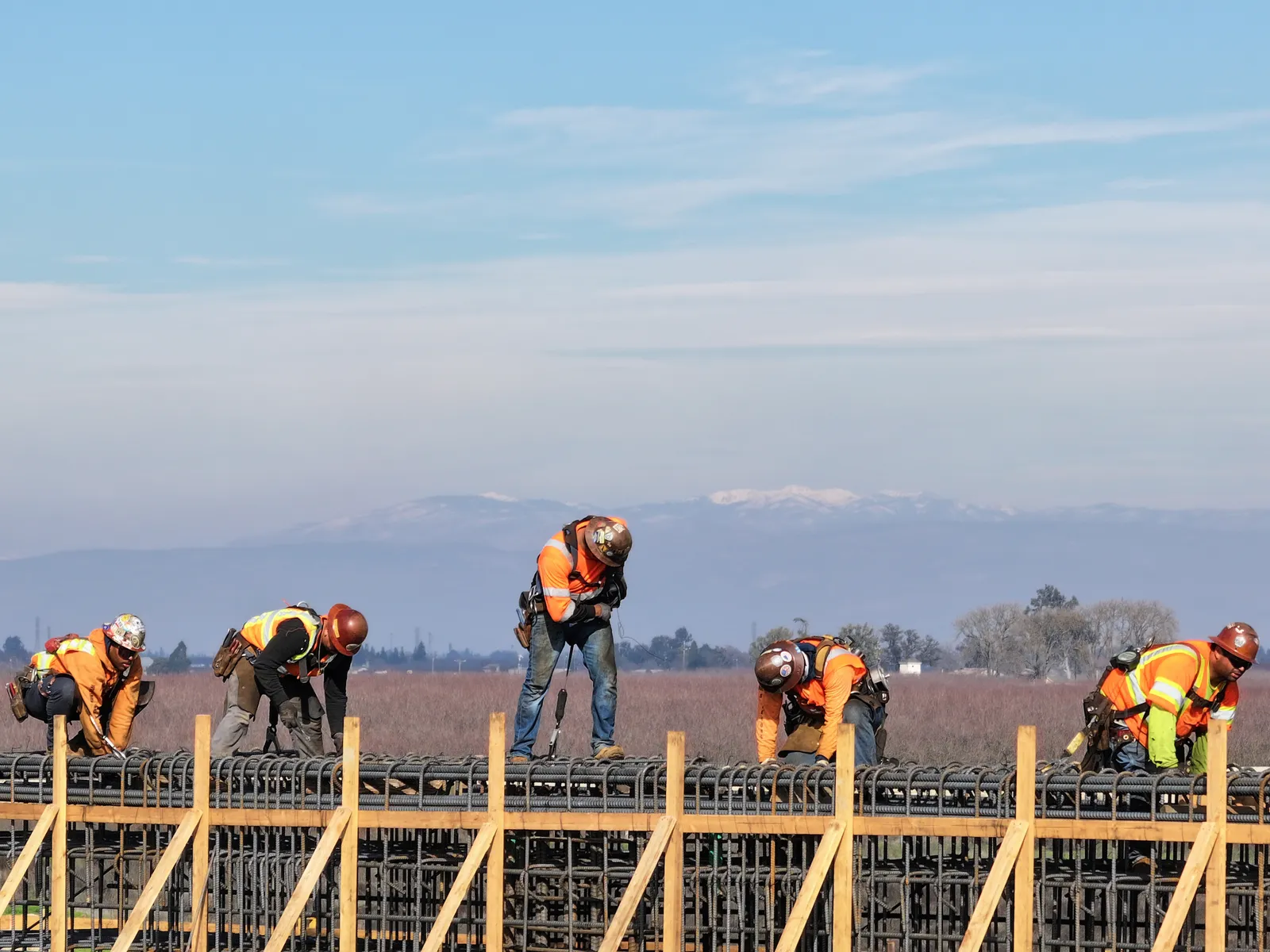
Economic, engineering, environmental benefits expected
“The [high-speed rail] industry that we could be creating here in America right now could be a very important part of the U.S. economy into the rest of the 21st century,” Buttigieg said. The mode’s advocates point to the many potential benefits.
“High-speed rail is one of the fastest-growing transportation industries in the world,” said U.S. Rep. Seth Moulton, a Democrat from Massachusetts. “America should be a part of that industry.”
“There [are] quite a lot of knock-on effects that happen from and within the rail industry, whether it's [in] rolling stock or infrastructure or other services that feed into that,” said Michael Cahill, president of rolling stock for Siemens Mobility North America. Siemens builds locomotives, light rail cars and passenger rail cars in Sacramento, California, employing over 2,500 people. It was named the preferred bidder to supply train sets to Brightline West and plans to build a production facility in Horseheads, New York.
Despite those benefits, Moulton believes that the greatest job growth related to high-speed rail derives from secondary investments — new real estate developments and businesses.
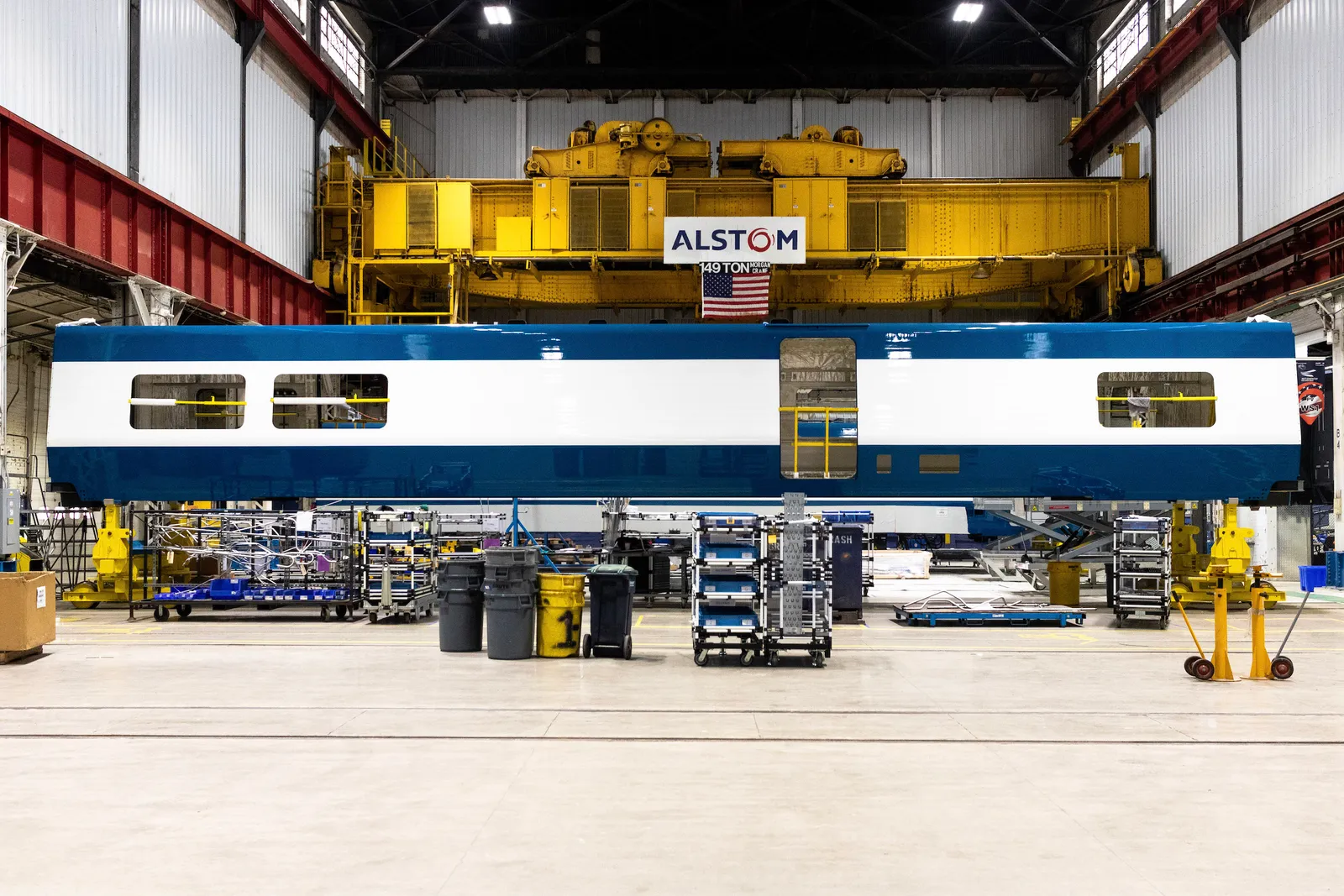
In addition to creating jobs, investment in high-speed rail is helping to build domestic capacity and expertise in the manufacturing of advanced trains, signaling systems and related technology, said Dani Simons, vice president for communications and public affairs at rolling stock manufacturer Alstom. Alstom manufactures Amtrak’s newest Acela trains, which are set to go into service on the Northeast Corridor this winter, according to Amtrak President Roger Harris. They will finally bring 160-mph service to parts of that corridor, Amtrak says. Alstom and Siemens Mobility are both in the running to supply train sets to the California High-Speed Rail Authority.
“We are creating a new industry,” said Greg Regan, president of the AFL-CIO’s Transportation Trades Department. “Not only are we investing in a state-of-the-art rail system, we're investing in people.” Both the California project and Brightline West have signed agreements that they will employ union workers for construction, operation and maintenance of their railroads.
But there’s more to high-speed rail than jobs and manufacturing. “It's a much cleaner way of travel, [and] it's a very safe way of travel,” said Wes Edens, the billionaire co-owner of the Milwaukee Bucks basketball team, co-founder of Fortress Investment Group and founder of Brightline, which backs Brightline West.
High-speed trains are powered by electricity, usually through overhead wires. Brightline West says it intends to use emission-free energy sources to power its trains by 2045. By diverting travelers from autos and airlines to its bullet trains, Brightline West says it will avoid over 400,000 tons of carbon dioxide emissions annually. The California High-Speed Rail Authority says it will reduce greenhouse gas emissions in the state’s Central Valley by 92,000 metric tons in the first year of operation.
As for safety, dedicated high-speed rail lines, like those being built in the U.S. and those found in Japan and Europe, mostly operate in corridors protected from road crossings, walkways or rail crossings. Japan’s Shinkansen bullet trains have never had a fatal accident in the 60 years they’ve operated.
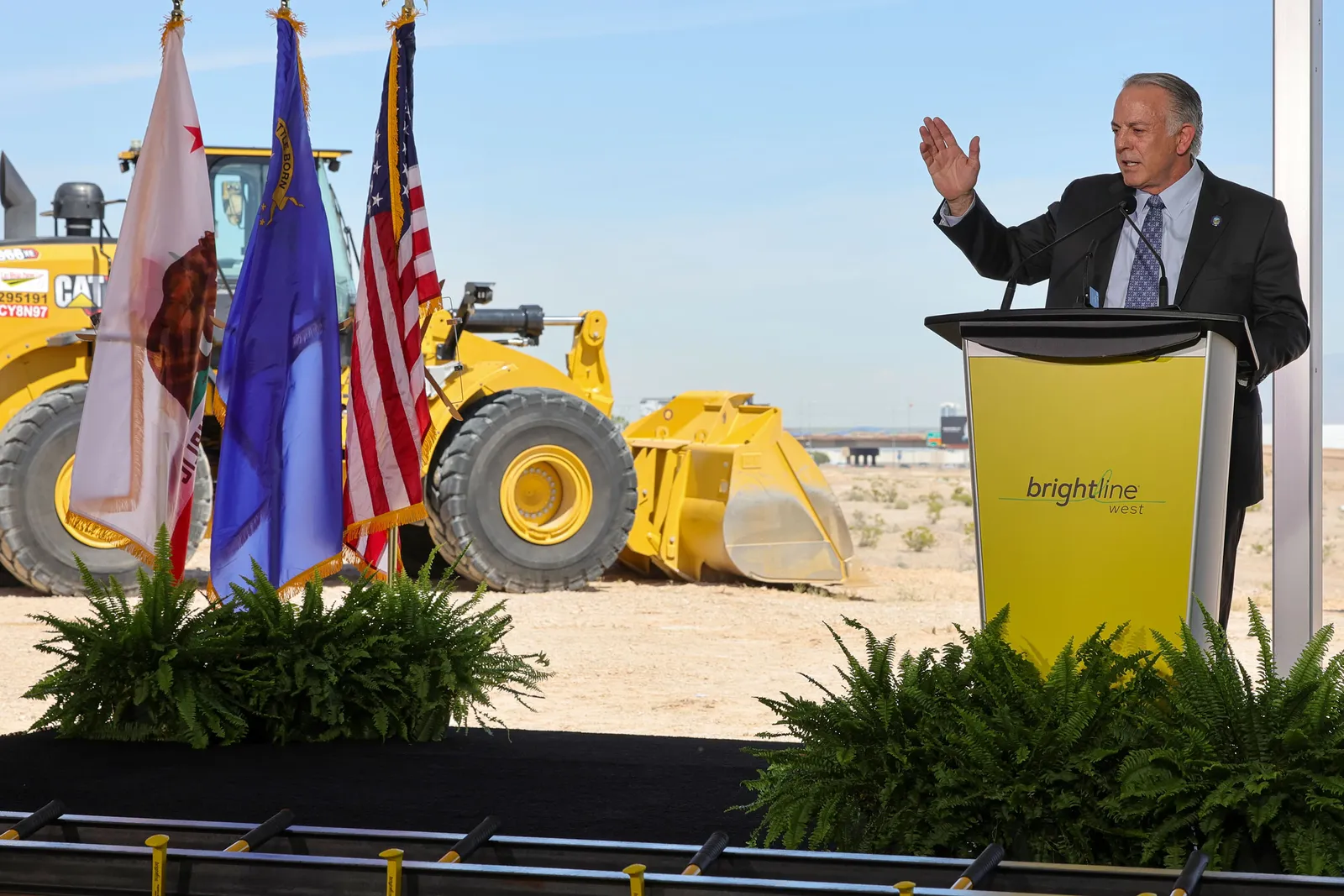
Breaking through speed barriers
Those familiar with the United States’ faster trains, like Amtrak’s Acela in the Northeast or Brightline’s service in Florida, might believe the nation already has high-speed rail. While the Acela trains are capable of speeds up to 150 mph, or 160 mph when the newest trains go into service, they run on rail lines built in the 19th century. Speeds are restricted through many curves and tunnels and across bridges. They operate alongside slower commuter trains and, in some cases, freight trains. This year they’ve been plagued by climate change-related challenges, including power outages during extreme heat and flooding from intense storms. Brightline’s Florida line operates at up to 125 mph.
True high-speed rail, as the International Union of Railways defines it, consists of rail lines that permit speeds of 155 mph or greater, which almost always requires dedicated, purpose-built tracks. Dedicated high-speed rail projects are costly to build and can take years in planning, environmental reviews and construction. Many “will fall by the wayside because this is a very expensive proposition,” said Terry Hynes, an attorney with the law firm Sidley Austin, who represents the proposed Texas Central project to link Houston and Dallas.
It can take seven or eight years just to complete the environmental review and permitting process, and local opposition is inevitable, Hynes said. “In the absence of exclusive federal jurisdiction over these projects, folks can use state and local law to throw obstacles in the way.”
Politics can also hobble high-speed rail. “There's obviously people in government who want to deflate this balloon,” labor leader Regan said. “They want to kill the whole momentum that we do have going.” But high-speed rail supporters think that momentum now will carry them past any obstacles.
Siemens’ Cahill believes that support for passenger rail is becoming more aligned across political groups. Edens concurs: “I think it's likely to continue to get supported, not just administration by administration depending on what the political winds are, but because getting this done is a really important step ahead for the country.”
Buttigieg sees a tipping point in the future: “There is a lot of momentum, there's a lot of excitement, there's a lot of passion, but what I really think has to happen is people need to see it and experience it.”
To stay up to date with the latest high-speed rail news, see our tracker for high-speed rail projects in the U.S. and subscribe to our newsletter to receive updates via email.


